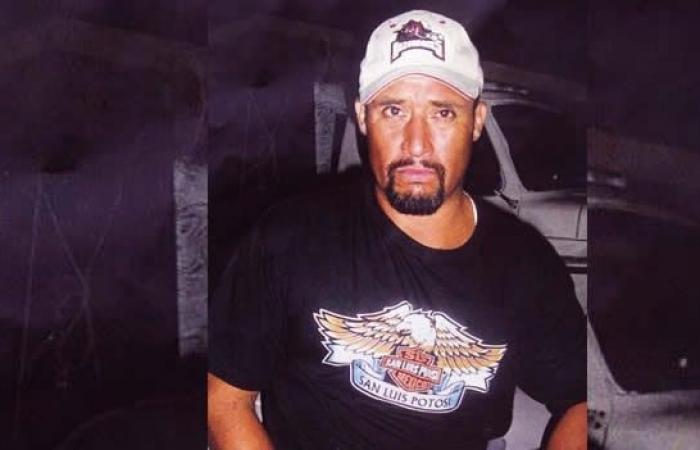Tijuana BC. The Inter -American Commission on human Rights (IACHR) determined that the United States government is responsible for the murder, deprivation of liberty, torture, lack of adequate medical care and finally violation of the right to justice against the Mexican migrant against Anastasio Hernández Rojas and his family.
Hernández Rojas died on May 31, 2010, three days after US agents – at least 20, said witnesses – they hit him brutally and electrocute with Taser weapon even though he was subjected and injured and did not represent any risk; They were observed from both sides of the border, in the immediate vicinity of what was the Mexican door of Cruce to Tijuana, one of the busiest in the world.
This May 1, almost 15 years after the events, the IACHR issued a report in which it concluded that “the state is responsible for the violation of the rights to life, personal integrity, health, to justice and to receive a human treatment during the deprivation of liberty, established in articles I, XI, XVII and XXV of the American Declaration on Human Rights in the detriment His children Yeimi Judith, Daisy Alejandra, Fabián Anastasio, Daniel and Daniela Hernández “.
By knowing the decision of the IACHR, the director of the American Friends Committee in the United States, Pedro Ríos, said that “on the world stage we have a degree of justice that was never possible in the United States”, so that country will have to account.
He recalled that during the investigation, “the border patrol agents manipulated evidence, lied to the researchers, erased video images and illegally obtained the medical records of Anastasio to challenge their reputation.”
In May 2024, the Mexican Foreign Ministry had reiterated the requirement that justice be done to Hernández Rojas and his family for the events that occurred during the administration of Barack Obama, who made the first demand to meet and resolve the case.
Lasted a few hours in the US and cost him life
Anastasio Hernández, 35, originally from San Luis Potosí, had entered the United States on May 28 and that same night, when he was in processing for deportation, according to the border patrol “did not attend” the order to stop because he allegedly tried to avoid his repatriation, and the agents “had” to submit it.
Witnesses pointed out that at least 20 border patrol agents and customs and border protection hit Anastasio, who could crawl a few meters directed to Mexico, from where he was in sight of citizens and agents of the national Institute of Mexican Migration, who could not do anything because he was on US soil; At the time the then delegate of the INM, Francisco Reynoso Nuño, admitted that they had no cameras and those that had not worked.
Although the US agents pulled him back to a remote area could not prevent him from both sides to witness the beating and how when the ambulance was still inert it took half an hour to arrive.
The Admissibility and Fund Report No. 60/25 of Case 14,042, on the international responsibility of the United States for violations of the rights to life, personal integrity and access to the justice of Anastasio Hernández Rojas, issued from Washington, United States, acknowledges that there was “disproportionate use of force by state agents in charge of border security and in the subsequent lack of investigation and sanction.”
Likewise, “the IACHR determined that the use of force in this case was unnecessary and disproportionate, considering that Mr. Hernández Rojas was disarmed, reduced and did not represent a threat. In addition, he stressed that the treatment received by the victim and, in particular, the way in which he was attacked with taser weapons in a stunning mode, configured acts of torture,” he says.
“Likewise, it was observed that Mr. Hernández Rojas did not receive adequate medical attention, so the IACHR referred to the obligation of the State to guarantee the right to health to persons deprived of liberty, and established that his death was a direct consequence of the violence exercised by state agents.”
The report states that “the IACHR identified serious failures in the criminal procedure as the lack of collection and destruction of evidence, the biases with which the investigation was opened, and the absence of measures aimed at ensuring the participation of the victim’s relatives.”
He concluded that although the parties – the victim’s family and government – signed a conciliatory agreement internally, this did not limit the competence of the IACHR of international instruments, without ignoring the legal effects that the agreement can general in the national sphere and its impact on the repairs of the case.
The report indicates that the Inter -American Commission on Human Rights established that “the facts of this case not only show a context of structural discrimination, but also reflect the lack of adoption of measures by the State that take into account the intersection of the different vulnerability factors in which a migrant person was a migrant, Latin and deprived of liberty.”
Endless torture minutes
When Anastasio’s death was learned – he had already been diagnosed with brain death – by a heart attack in the San Diego Hospital Memorial Hospital, California, a young Tijuanense provided his testimony and several videos in which the screams of pain, agony and piety of the migrant when he was beaten and electrocuted, as well as the useless claims of people who demanded to stop the aggression.
The young man who delivered the material recalled in that 2010 returned to Tijuana when he heard Anastasio’s screams. Although he was about 50 meters and dark he could see that the migrant was a gap, handcuffed with his hands back and an agent had a knee on his back and another in the neck.
He could see that several border and customs agents hit the Mexican and the sign of one all withdrew and made discharges with the taser.
The then director of the American Friends Committee, Christian Ramírez, said that the team of lawyers appointed by the General Consulate of Mexico in San Diego, California, found that the beating lasted 15 minutes.
Recommendations
The IACHR reiterated the recommendations of the United States report to fully repair rights violations; reopen criminal investigation in a diligent and effective way, in order to fully clarify the facts, identify all those responsible and impose the corresponding sanctions, and guarantee access to mental health care, in a concerted manner to the victim’s relatives.
He also urged the State to “adopt guarantees of non -repetition, including: adapting the legislation on the use of force to international standards; ensuring the participation of victims and greater transparency in criminal proceedings; improve detention conditions, especially in border centers; restrict the use of taser type weapons according to principles of need and proportionality and prohibit their use in mode of stunning; and train police officers in human rights in human rights in human rights in human rights in human rights in human rights. of force, differential approaches and intersectionality. “






